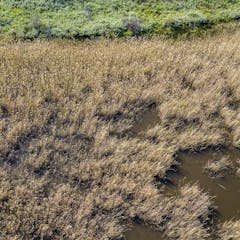
Articles on Carbon sinks
Displaying 1 - 20 of 80 articles

Knowing which parts of Africa best help to store carbon means funding and policy efforts can be directed to protecting and increasing this carbon ‘land sink’.

Our tallest trees are world champions when it comes to capturing and storing carbon, but they don’t like the heat. Climate change will trigger mass tree deaths in Tasmania. Here’s what can be done.

Wetlands can prevent flooding, trap carbon and support livelihoods, as long as they are protected and managed.

Nearly a third of all moorland burning in Scotland occurs on peat soil – a vital carbon sink.

Depending on the methods used, the measurement of forest carbon can vary by as much as 100%.

Climate modelling that best accounts for the processes that sustain plant life predicts plants could absorb up to 20% more CO₂ than the simplest version predicted.

Tracking both the amount of carbon and the time that it remains stored is key to unlocking the potential of nature-based carbon storage as a climate mitigation strategy.

New research shows that northern peatlands may not help regulate our climate by the end of the century.

Peatlands have always had a place in art, writing and poetry. In times of global warming these cultural reflections can help open up debate about the biodiversity and climate crisis.

National strategies depend on natural methods to offset emissions – but acknowledge this may not be possible.

The Angolan Highlands are hydrologically and ecologically important - and the region’s newly mapped peatlands are valuable “carbon sinks”.

By adapting and applying existing policies, South Africa can protect and restore its critical ‘blue carbon’ sinks.

Peat is partially decomposed plant matter that has accumulated over thousands of years.

Inoculating trees with an edible fungi can produce more protein per hectare than pasture-raised beef, while reforesting, storing carbon and restoring biodiversity.

As more companies feature wood and other bio-based products in their offices, what are opportunities and limitations of making corporate net-zero carbon pledges about building materials?

Climate change threatens the crucial storage of carbon in Aussie forests. Victoria’s national parks alone store almost 1 billion tonnes of carbon dioxide equivalent.

Halting forest loss is a crucial milestone on the road to net zero.

A new analysis shows almost all emissions reductions will be the result of state government policies, and will have virtually nothing to do with the federal government.

Secondary forests are growing on deforested land in the Amazon – but not enough to offset emissions from logging.

New research shows how the Montreal Protocol protected vegetation, helping keep carbon out of the atmosphere.
